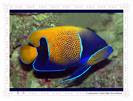To determine the area of the bill, it was first converted into grayscale using gimp. Using its histogram from scilab, its threshold was determined to be 0.937. This was used to convert the figure into a binary image using im2bw(Img,0.937). The resulting image was then inverted by subtracting it from 1, thus resulting to the image below.
 Since there has been a problem with my last activity, I created another program for the determination of the image's area. The resulting area using my program and the converted image is 131323 pixel units2 , which has a %diff. of 1.19% compared with the the actual measured area is 129781 pixel units2. This value is therefore within the allowable 5% difference.
Since there has been a problem with my last activity, I created another program for the determination of the image's area. The resulting area using my program and the converted image is 131323 pixel units2 , which has a %diff. of 1.19% compared with the the actual measured area is 129781 pixel units2. This value is therefore within the allowable 5% difference.rating-10 because I got a low %difference
Acknowledgements: rica and beth- for helping me with some of the concepts involved
angel - for the conversion of my original image to grayscale

